Practical ideas for cleaner energy
The wind industry is ready to work together with governments, business, communities, and citizens to achieve new scales of growth for wind energy and true system transformation.
 |
| Ben Blackwell, CEO of the Global Wind Energy Council |
The current global energy crisis and conflict in Ukraine have exposed the stark reality and costs of prolonged dependency on volatile fossil fuels. Without accelerating action to scale up wind and renewable energy in this decade, we will miss our global target of net-zero emissions by 2050 – and risk civilisational threats of social disorder, irreversible environmental damage, and economic hardship.
The net-zero roadmaps and the scientific consensus are crystal-clear: rapid phase-out of fossil fuels and ramp-up of renewable energy are both urgently required to achieve deep reductions in emissions across all economic sectors, and to keep a 1.5°C pathway within reach.
The tools, tech, and know-how are on our side. The industry has decades of experience in building GW-scale pipelines, thriving green industrial hubs, and a global workforce of more than 1.25 million people.
Wind energy has delivered incredible cost reduction over the last decade – onshore wind is among the most cost-efficient forms of new-build power generation in countries covering two-thirds of the world’s population, and offshore wind is rapidly out-competing fossil fuels.
Wind energy is one of the most competitive, mature, and quickly deployable energy technologies we have today, and has a central role in keeping the lights on, improving global energy security, ensuring energy independence and meeting emissions reduction targets.
But for wind to thrive, it needs large, steady, and visible volumes for deployment and a robust global supply chain. Roadmaps to net-zero already show that annual wind installations must quadruple from current levels to 2030 to get on-track for our Paris Agreement targets. By 2050, wind energy must generate more than one-third of global electricity, up from 6 per cent today.
As the companies and organisations representing more than 80 per cent of wind installations and supply chains worldwide, we are calling on governments to commit to dramatic action to mitigate climate change and the energy security crisis.
Scale up, streamline, and commit
This must be reflected in updated Nationally Determined Contributions as soon as possible. Greater short- and long-term ambition in wind power is needed, in line with a net-zero trajectory and energy
security imperatives. While different regions of the world will transition at different speeds, concrete renewable installation or generation targets should carry a horizon to 2030, 2040, and beyond.
Clear short-term actions for the next few years are then required to translate these ambitions into a market-ready framework and effective investment signals. Targets should be aligned between the public bodies governing climate, energy, economy, environment, infrastructure, and workforce to ensure that various government bodies are adequately prepared to implement them.
Targets should also be integrated into national climate, energy, and industrial development strategies which recognise the linkages between grid-scale renewable energy, energy security, energy affordability, sustainable growth, socioeconomic benefits, and adequate speed of development.
Scaling up wind energy is a win-win in terms of lowering energy prices, stimulating investment, economic growth, and job creation, and achieving climate targets while supporting energy security. But overly complex permitting schemes are slowing down deployment in some world-leading wind markets, from Italy to India. In some countries, nearly a decade of lead time is required to develop a wind project. This is a universal challenge which must be addressed on a grand scale.
The pandemic experience has shown that robust physical and digital infrastructure can be assembled in an emergency to reorganise governing procedures and supply chains in line with national interests. Amid the energy security and climate crises, this urgency needs to be applied to renewable energy projects and enabling infrastructure.
Less than one-third of public and private energy investment today targets grids and storage solutions. Resources allocated to planning, constructing, and modernising grids for the future energy system must dramatically step up within this decade.
Development of secure, smart, and flexible grids must keep pace with ever-larger shares of renewable energy on the system.
This will require coordination among system operators, regulators, utilities, and industry to conduct long-term forward-planning on grid expansion and reinforcement, electrification of transport and other sectors, creation of regional markets for power export, and trading and ensuring cybersecurity.
Grid planning and regulation should allow for innovative models for build out, including multi-linked wind hubs and offshore wind energy islands connected to several markets or price zones. Grid planning and market mechanisms such as auctions should also account for storage solutions, such as pumped hydro, utility-scale batteries and larger facilities, which can minimise grid congestion and support balancing.
In many countries, electricity markets struggle to send meaningful and timely investment signals in line with net-zero ambitions. Once the current energy crisis eases, the merit order effect in more liberalised markets will mean that wholesale market revenues for renewable energy are cannibalised as wind and solar deployment increases.
This price pressure will only intensify with limited volumes of project capacity available, increasing interest rates and rising demand for transition-related commodities and critical minerals. In some countries, auction design has encouraged “negative bidding,” which has been particularly unhelpful and undermines the viability of a renewables supply chain to replace fossil fuels.
Power markets must evolve to incentivise investment in renewable generation and power infrastructure, if we are to shift to a future energy system which is flexible, responsive to demand, reliable, and dependent on a majority share of renewable energy.
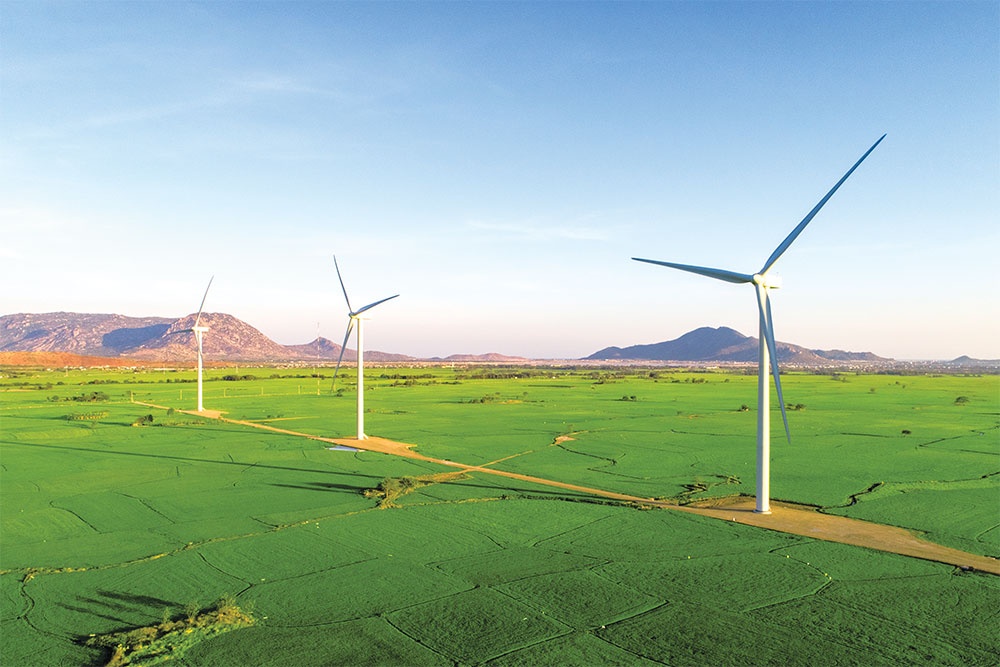 |
Policies and benchmarks
Governments around the world face difficult choices in balancing energy security needs amid volatile fossil fuel prices and climate goals. But policymakers must be clear-eyed in their response packages and strategies. The speed of constructing new grid-scale renewable energy projects should be recognised and prioritised over investment in new fossil fuel infrastructure where possible.
Wind energy is set to displace fossil fuel generation worldwide, offering affordable, scalable, zero-carbon power at huge capacity factors. This trend should be accelerated in the current crisis; any short-term energy security concerns must be carefully managed to avoid slowing down renewables expansion or creating stranded assets in the long term.
Government and financial actors should stick to their commitments to phase down coal and phase out subsidies for upstream/downstream fossil fuels, while rapidly scaling up clean power generation. Accelerating energy efficiency and energy conservation efforts in the near term can also ease the current energy crisis.
This includes more jobs created through investment in large-scale renewable energy deployment, grid enhancement, and energy efficiency. Global North-South cooperation and trust will be vital to ensuring the dividends of the energy transition are equitably distributed to everyone.
Wind energy already promotes sustainable development in communities around the world and can play a key role in creating decent work and quality jobs, while enhancing financial flows towards climate-resilient growth in developing economies. Stronger alignment of national energy, climate, trade, and industrial development policies can support fair, sustainable, and local value creation as the transition advances.
There is no shortage of capital for wind energy where an enabling investment environment exists. But to collectively accelerate renewable energy to new heights, financing in the energy sector must be decided under “do no significant harm” principles that address social and environmental impacts, and avoid the risk of stranded fossil fuel assets.
Climate targets should be mainstreamed across financial ministries, development banks, and export credit agencies to align public spending with renewable energy and development goals. More organisations should commit to the pledge made by 39 entities at COP26 to align international public support towards the clean energy transition and out of unabated fossil fuels.
Effective and credible market approaches to carbon pricing can send strong market signals to drive investment in low-carbon technologies. COP26 and the Bonn conference of 2022 saw progress on the rules for international transfer of carbon credits and the Sustainable Development Mechanism for trading, but further work is needed to operationalise these to effectively recognise the economic and societal costs of emissions.
Good practices for these mechanisms include deterrent of emissions at source and clear measurement and verification rules for the global carbon market.
| Bui Trung Kien - Vice chairman CME Solar Investment JSC | |
This year is likely to be quite a challenging one, with negative impacts accumulated after a long period affected by socioeconomic uncertainties on the global scale, as well as mounting difficulties facing the local economy and adverse fluctuations of diverse factors such as inflation, high input costs, spiking interest rate, and more. For businesses in renewable energy sector, incentive policies are deemed unclear and lack of synchronisation, badly affecting the implementation of projects, while exacerbating risks and costs for businesses. With the above context, CME Solar has committed to taking definite, yet sustainable development steps to reduce risks. Rooted on solid business results in 2022, CME Solar is bound to champion breakthrough development in business results in 2023, expand cooperation with many more factories and trading facilities through bringing effective rooftop solar power solutions, and deepening company’s sustainability footprints for environmental protection. Leveraging the government’s strong commitment and renewable energy transition strategy, relevant policies and detailed guidelines will soon be completed, ensuring synchronisation and clarity while creating practical incentives to attract businesses to invest in renewable energy development. Since the inception, CME Solar has been cooperating closely with businesses and factories installed with rooftop solar power systems to ensure optimal investment, exploitation, and operation plans attuned to the nature of operation of each factory and business establishment, from there bringing the highest efficiency to those facilities. As one of the pioneers in renewable energy investment and development in Vietnam, the company has invested in resources, built systems, and applied wide-ranging solutions to tackle environmental, social, and governance (ESG) issues in business practices, creating sound foundations for sustainable development. This is deemed a novel and comprehensive approach when private sector businesses work with the state in dealing with social and community-oriented issues that were previously considered the domain of the public sector. Applying ESG is by no means easy, as it helps transform an enterprise from a purely profit-driven unit into a profit-seeking enterprise with environmental responsibility and efficient use of resources – one that adequately handles issues of social concern such as labour relations, gender equality, and obedience to transparent and objective corporate governance standards. Another cost-affecting factor that businesses, especially exporters, need to prioritise in ESG implementation is that from the beginning of 2023, the EU will apply a carbon tax law. Although initially applied only to a few major carbon-emitters in the production process, the list can later be expanded. As the EU is Vietnam’s major export market, the application of ESG would also contribute to reducing the costs incurred related to this kind of tax, which is about $60 per tonne of CO2. Accordingly, for each MWh of renewable energy being used, businesses can be granted a use certificate and they can sell this in the market to generate additional income, helping to cover expenses for ESG compliance implementation. In order to realise the sustainable development and ESG criteria, we have been teaming up with diverse business partners to install rooftop solar power systems on production and business facilities. CME Solar is responsible for all the costs of investment, operation, and power supply at competitive price for businesses. Our projects are witnessed in localities throughout Vietnam and engage many fields such as apparel, footwear, pharmaceuticals, logistics, food processing, equipment manufacturing, and more, involving both foreign-led and local businesses. For each MW rooftop solar power installed by us on factories and production facilities, it contributes to reducing 1,025 tonnes of CO2 emissions annually, equivalent to planting over 17,000 trees per year. Leveraging energy cost optimisation through working with us to take advantage of available roof area to install rooftop solar systems with no need to spend, businesses can save up to 20-30 per cent of their energy costs, of which 10-20 per cent will be directly deducted into the power purchase price and enabling 10 per cent of power volume reduction needed to cool the factories during a project life stretching as much as 25 years. | |
| Linh Nguyen - Country manager Scatec Vietnam | |
We established Scatec Vietnam in February 2020 and have been looking for investment opportunities in the country, including greenfield and brownfield. Since then, we successfully acquired an operating wind farm of 39MW, known as the Dam Nai wind project in the south central province of Ninh Thuan. In 2022, Vietnam saw continuous development of renewable assets and projects, and we are looking forward to the announcement of the renewable policy by the government in 2023. We are accelerating access to reliable and affordable clean energy in emerging markets and wish to develop and operate renewable plants here. Over time, we have developed a business model which allows us to capture the total value of a renewable project. A key priority for us is to ensure focus on health and safety matters and manage the potential impact on people, local communities, and the environment. Our global strategy is to further expand and develop renewable technologies – including solar, hydro, and wind projects, as well as battery storage and green hydrogen. We have built a strong local team based in Vietnam, putting us in an excellent position to develop a solid project pipeline as the market evolves. Vietnam has the potential for significant renewable development and is gifted with great potential for wind, solar, and hydropower. To realise the potential, the government should introduce a clear policy on renewable development. It must continue strong support for traditional wind, solar, and hydro projects with high standards of environmental impact management, and kickstart the offshore wind industry with a clear off-take regime roadmap and marine regulation for large-scale projects It should also introduce carbon-captured technologies into manufacturing, especially carbon-intensive industries such as ammonia for fertilisers, steel, and natural gas processing; and incentives for locally produced and imported electric vehicles. | |
| Bui Van Thinh - Chairman Binh Thuan Wind and Solar Energy Association | |
Currently, the renewable energy market is facing a policy gap as no transition mechanism is in place applicable to unfinished projects, while future project developers are finding it hard to figure out how to prepare for investment. This is a big bottleneck that needs to be removed, with the country’s potential in terms of renewable energy tremendous and Vietnam securing great attention from domestic and foreign investors. The second bottleneck that threatens to reduce attractiveness in the sector is the transmission system. Currently, Vietnam’s power grid remains weak, and transmission line projects to alleviate the load are often behind schedule. In this context, it is difficult to absorb more renewable sources to ensure the safe and efficient operation of the current grid system. This consequence causes wind and solar power plants to have their capacity cut by as much as 25 per cent, greatly affecting the ability to operate and allocate financial cost plans. In addition to power prices, there are currently many irrationalities and obstacles to the development of renewable energy. For example, the input price of power plants has spiked in recent years, yet the power price has been almost unchanged since 2019. Electricity of Vietnam has recently forecast a loss reaching $1.34 billion for 2022. This might be the cause behind the mobilisation for renewable energy development as the price of such energy fetches higher compared to the average power price, triggering the need to invest in power grid development to release renewable energy capacity. These impediments greatly affect investment attraction into renewable energy market. At this point of time, the risk associated with soaring capital cost due to spiking interest rates and capacity reduction owing to line overload have led to trimmed revenues, leaving many projects unable to balance their finances. | |
| Hoang Giang - President and CEO PE Vietnam | |
Vietnam’s policy of renewable energy development in recent years has created a great motivation for domestic and foreign businesses to invest in green energy gearing towards sustainable development. The government’s national energy development strategy to the end of the decade and beyond, as well as its net-zero carbon emission goals, continue to inspire us to invest in this field. The results of recent policies are apparent, contributing to making Vietnam one of the leading countries in the region in terms of renewable energy. However, as of now, the preferential feed-in tariff policy for such development expired some time ago, while a new policy has not yet been issued. In fact, many projects have failed to commence commercial operation in time even though the investment has been completed or is about to reach completion. Statistics indicate that over 60 wind power projects with total capacity of 3,500MW are behind schedule for commercial operation. Total investment value put into these projects is enormous. Hence, we hope that a follow-up scheme for the development of these projects will soon be introduced, and applied to unfinished projects as well as fresh projects so that the investors can build trust. To push development, the government should consider a reasonable pricing mechanism leveraging sustainable energy strategy for projects that have not reached commercial operation but have been completed or are nearing completion. The new price scheme for these projects may not be the same as the former one, but can still support investors to avoid going bankrupt. With new projects, we can adopt a bidding mechanism for execution. |
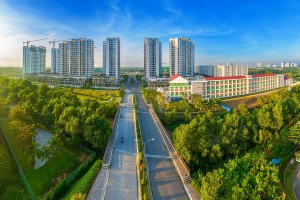 | Over $15 billion available for Vietnam’s green transition The Just Energy Transition Partnership is a bold initiative by the International Partners Group, including the European Union, the United Kingdom, France, Germany, the United States, Italy, Canada, Japan, Norway and Denmark, to mobilise an initial $15.5 billion of public and private finance over the next three to five years to support Vietnam’s green transition. |
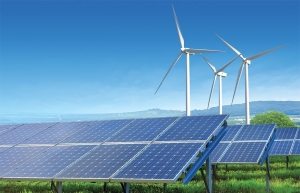 | Vietnam up to the challenge in hitting net-zero targets At COP27 last month, Vietnam took further action to fulfil its net-zero goals by 2050 through a strong energy transition, which has been putting pressure on long-term energy policy revisions to ensure international commitments. |
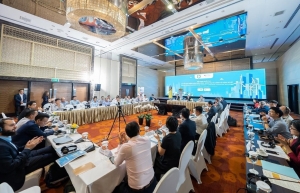 | Just energy transition: a green pathway for sustainable development Vietnam is striving to realise the country’s strong commitment to decarbonisation through a just and sustainable energy transition. |
What the stars mean:
★ Poor ★ ★ Promising ★★★ Good ★★★★ Very good ★★★★★ Exceptional
Related Contents
Latest News
More News
- Heavy industries set for pilot greenhouse gas quotas (December 25, 2025 | 10:00)
- Swedfund invests in MSME growth and climate action in Vietnam (December 19, 2025 | 11:42)
- GreenYellow brings solar energy to light up remote schools in Tuyen Quang province (December 19, 2025 | 08:00)
- Charge+, Grab partner to develop EV charging network in Vietnam (December 18, 2025 | 17:11)
- Linking sci-tech and innovation to Vietnam’s net-zero future (December 18, 2025 | 14:31)
- Driving double-digit growth through green and circular transformation in Vietnam (December 17, 2025 | 09:00)
- Standard Chartered and ACCA deepen collaboration to develop Vietnam’s talent for a sustainable future (December 15, 2025 | 18:18)
- Schaeffler reports strong early output from Dong Nai solar project (December 12, 2025 | 15:16)
- Forestry conference highlights biodiversity and sustainability goals (December 09, 2025 | 13:35)
- Home Credit honoured among top 10 sustainable companies in trade and services (December 09, 2025 | 12:18)

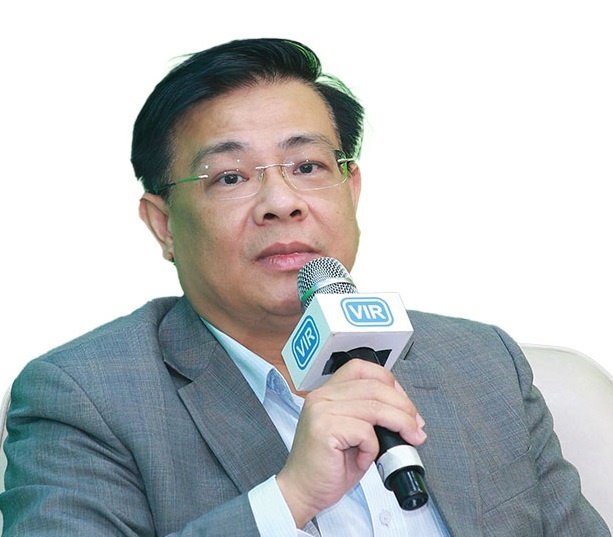


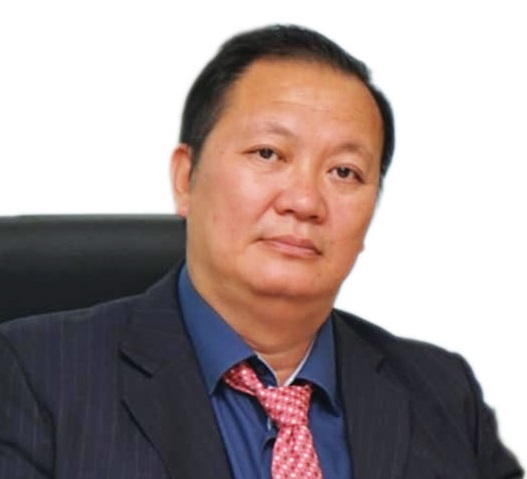
 Tag:
Tag:



















 Mobile Version
Mobile Version